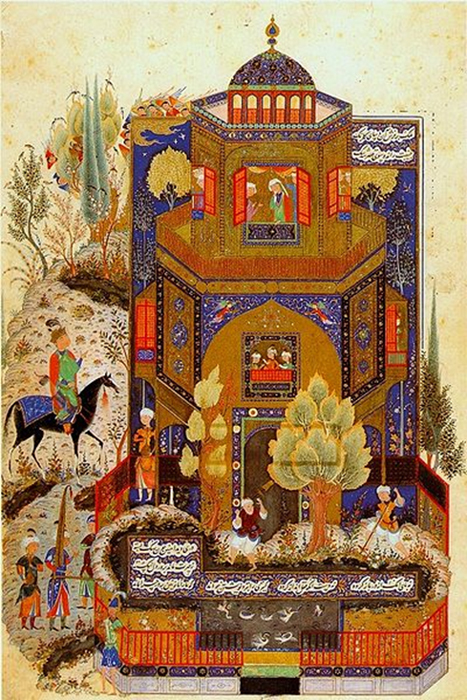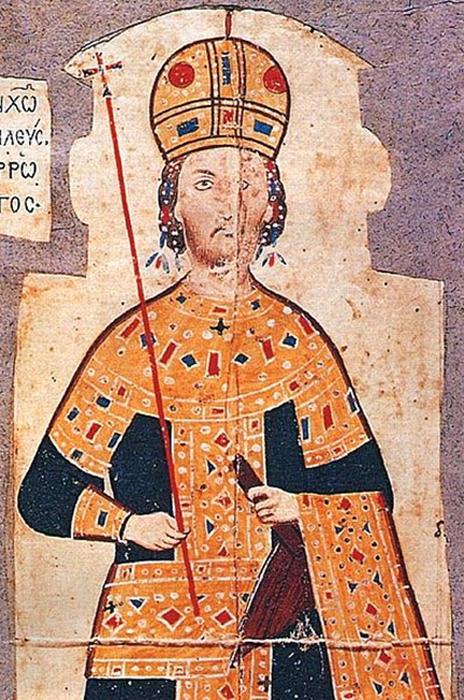
Ibn Battuta—The Marco Polo of Dar-al-Islam
Before the invention of transportation such as trains, airplanes, and efficient, cheap travel over open ocean, people did not usually travel farther than perhaps 20 miles from their hometown. An exception to this would be those who were very wealthy and had an insatiable itch for distant lands that they found exotic. The West had Marco Polo. The Islamic world had Ibn Battuta. During his travels, Ibn Battuta traveled all over Africa, eastern Europe, the Middle East, India, and China before finally returning to Morocco to retire and live a quieter life as an Islamic scholar.
Early Life of Ibn Battuta
Ibn Battuta was born in the year 1304 in the city of Tangier in modern-day Morocco. His ethnically Berber family was known for producing Islamic judges. Ibn Battuta received a robust education in Islamic Law. This would help him during his travels since his status as an Islamic scholar caused people in Muslim lands to show him respect and hospitality, aiding him in his travels with gifts and places to stay. During his lifetime, he would travel almost the entire Dar al-Islam, that is, the abode of Islam or the Islamic world.

Ibn Battuta traveling by camel. (Public Domain)
Beginning of His Travels—The Hajj to Mecca
I set out alone, having neither fellow-traveler in whose companionship I might find cheer, nor caravan whose party I might join, but swayed by an overmastering impulse within me and a desire long-cherished in my bosom to visit these illustrious sanctuaries. So, I braced my resolution to quit all my dear ones, female and male, and forsook my home as birds forsake their nests. My parents being yet in the bonds of life, it weighed sorely upon me to part from them, and both they and I were afflicted with sorrow at this separation.
— from The Travels of Ibn Battutah
In 1325, at the age of 21, Ibn Battuta went on a pilgrimage to Mecca to fulfil his duties as a devout Muslim. During his journey, he traveled through North Africa and Egypt where he visited Alexandria and Cairo. His travels gave him a strong desire to continue traveling and to see the world as well as the many sanctuaries across the Muslim world that interested him as an Islamic scholar.
Travels in the Middle East and the Horn of Africa
Over the next year, from 1326 to 1327, Ibn Battuta traveled through Iraq and Persia. In 1328, he embarked on a voyage to east Africa where he visited the great Somali port city of Mogadishu. From there, he continued to journey south and explored the coasts of modern-day Kenya and Tanzania.

Ibn Battuta made a brief visit to the Persian-Azari city of Tabriz, Iran in 1327. (Eвгений Ардаев / Public Domain)
Journey to India
Upon completing his journeys in Africa, he gained a desire to travel to India and become a qadi, or an Islamic judge, for the sultan of Delhi. He traveled through Egypt and Syria, reaching Anatolia, or modern-day Turkey, by about 1331. From there, he crossed the Black Sea to the lands of the Khanate of the Golden Horde. While there, he was welcomed as a learned scholar of Islamic law to the courts of Khan Uzbeg.
Because of this, Ibn Battuta lingered for a year or two in the court of Khan Uzbeg and was even sent by Uzbeg to travel with one of his wives on a trip to Constantinople. While in Constantinople, Ibn Battuta was able to explore the city and see the Hagia Sophia. He is also said to have met the emperor while he was there.

Ibn Battuta may have met Andronikos III Palaiologos, Byzantine emperor in late 1332. (Андроник III Палеолог / Public Domain)
Ibn Battuta later would write that he was surprised by the enormous number of churches within the city. Constantinople was one of the few major non-Muslim cities that the Islamic scholar visited. Ibn Battuta was also surprised at how Mongol women conducted themselves within the Khanate and how they were allowed to speak much more freely than in the regions to which Ibn Battuta was more accustomed.
Stint in Delhi
Sometime in 1333, the Islamic scholar, now having been away from home for eight years, continued his journey and crossed the central Asian steppe. He arrived in Delhi by way of Afghanistan in 1334 and was welcomed into the court of Muhammad bin Tughluq, the sultan of Delhi. Ibn Battuta served the sultan as an Islamic judge for about 7 years. During this time, he took wives and had children with them. At first, he enjoyed his time in Delhi, but after a while he began to grow weary of the sultan who was known for indulging in harsh punishments. For example, the sultan would regularly throw his enemies to charging elephants that were mounted with blades.
Escape from Delhi and the Voyage to Maldives
Finally, in 1341, Ibn Battuta had a chance to leave the court of the sultan. Muhammad bin Tughluq asked Ibn Battuta to go as an emissary to the Chinese Imperial court. This intrigued Ibn Battuta. He wanted to get out of Delhi and still being relatively young, only 37, he was still hungry for adventure. Ibn Battuta eagerly accepted the role and was off to the Indian coast to take a ship around Southeast Asia to the Chinese port of Quanzhou. This plan was interrupted, however, when Ibn Battuta ran into trouble. He ended up being robbed and kidnapped. He barely escaped wearing his skin, let alone his clothes. According to the story, he escaped only wearing his pants.
- The Axis Mundi: Sacred Sites Where Heaven Meets Earth
- The Vijayanagara Empire: Friendly and Feuding Brothers Who Ruled the South of India
- The Chola Dynasty: Exploring the Achievements of an Indian Empire Spanning 400 Years

Muhammad bin Tughluq in Delhi. Ibn Battuta served as a qadi or judge for six years during Muhammad bin Tughluq's reign. (Hutchinson / Public Domain)
When he finally made it to port, the ships he traveled with were blown off course and shipwrecked. Through a series of more unfortunate events, Ibn Battuta found himself in Maldives. The islanders welcomed him, and he stayed in Maldives for the next year, enjoying the tropical environment and working once again as a judge.
Voyage to China
Ibn Battuta considered staying in Maldives, but his year-long stay there was not entirely paradisiacal. He experienced culture shock since he found some of the dress styles and customs of the islanders to be offensive. Later that year, he had a falling out with the rulers and decided to continue his journey to China. After a short visit to Sri Lanka, Ibn Battuta set out from the southern tip of India around Southeast Asia to finally arrive in China in the port of Quanzhou in 1345, four years after having set out from Delhi. While in China, Ibn Battuta was enamored by the cities built there. One of the cities that he visited, or at least said that he visited, was Beijing. He also wrote that he visited the Grand Canal that starts there. He once said that China was one of the safest and most accommodating places to which he had traveled.
Not all was well in China for Ibn Battuta, however. He also was uncomfortable with the non-Islamic customs of the Chinese and, in his writings, he refers to them as pagans and infidels. Despite this, he remained in China for several years, living mostly among Muslim communities in China. He was still impressed by the major cities of China. In his writings he described Hangzhou as the largest city he had ever seen.

The routes traveled by Ibn Battuta. (Weetjesman / CC BY-SA 4.0)
Returning Home
Ibn Battuta doesn’t appear to have ever returned to the employ of Sultan Muhammad bin Tughluq. Instead of going to the court of the Chinese emperor, he just spent a few years traveling in China before deciding to return home to Tangier. He arrived back in his home city in 1349, 24 years after he had first set out. When he arrived, however, he learned tragically that both of his parents had passed away. Not having much to go back to in Tangier, Ibn Battuta went to Andalusia and then Timbuktu before returning permanently to Morocco in 1354. In that year, the sultan of Morocco asked Ibn Battuta to record all of his travels. He did, with the help of a scribe, in a document that has the wordy title, A Gift to Those Who Contemplate the Wonders of Cities and the Marvels of Traveling.

Book illustration by Léon Benett published in 1878 showing Ibn Baṭṭūṭah – right, in Egypt. (Jules Verne / Public Domain)
Legacy
For the last fourteen years of his life, Ibn Battuta appears to have lived a fairly quiet life living in Tangier as an Islamic legal scholar until his death in about 1368. Perhaps, he decided that he was too old to travel. During his journey, Ibn Battuta traveled a total of about 75,000 miles and traversed across as many as 44 modern-day countries. Because Ibn Battuta was exposed to so many of the cultures of the Islamic world, he is now one of the main sources for historical and cultural information on Islamic cultures during that time period. Most people think of Marco Polo when they think of an ancient world traveler, but arguably Ibn Battuta is a worthy rival for this title.
Top image: Portrait of the great Moroccan explorer Ibn Battuta. Source: CC BY-SA 3.0
By Caleb Strom
References
Andrews, Evans. 2017. Why Arab Scholar Ibn Battuta is the Greatest Explorer of all Time. [Online] Available at: https://www.history.com/news/why-arab-scholar-ibn-battuta-is-the-greatest-explorer-of-all-time
Bartel, Nick. 1999. The Travels of Ibn Battuta. Berkely Orias. [Online] Available at: https://orias.berkeley.edu/resources-teachers/travels-ibn-battuta
Famous Scientists . Ibn Battuta. [Online] Available at: https://www.famousscientists.org/ibn-battuta/















